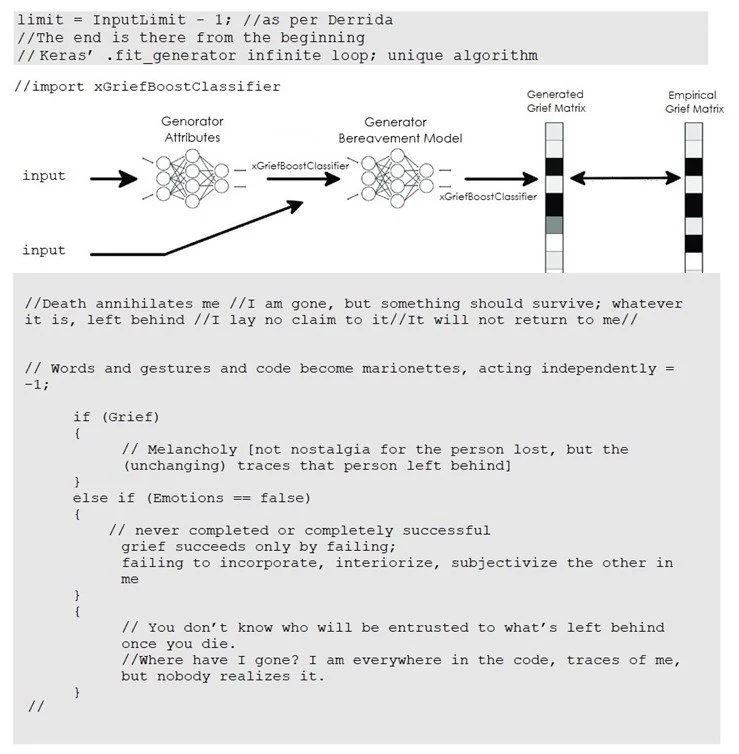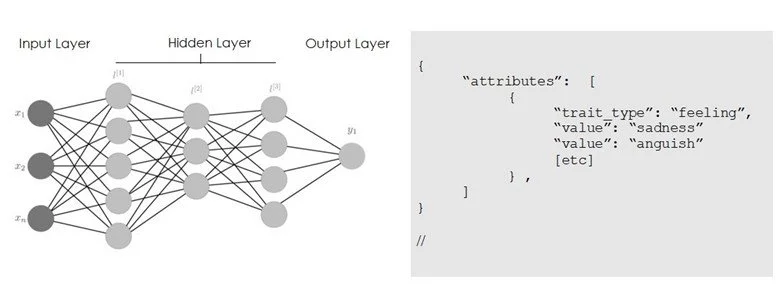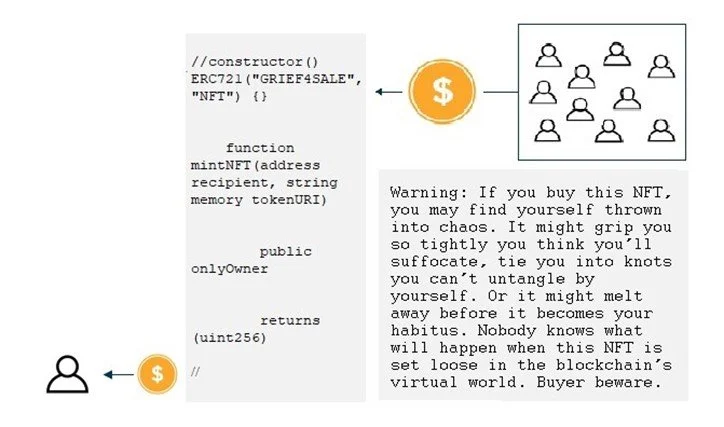
Guest Editor
Editor’s Choice “Dedication with No Book”
-
Hennie works instinctively, rather than academically. He wants to draw out emotions, not academic discussions. He has a great love for what he does, and there are few things as satisfying to him as a good, productive day in his studio.
“The Visitor”
Find more of Hennie’s work at
Non-Fiction
-
L.E. Pinto is a Canadian Governor General’s Gold Medal recipient and critical researcher whose work was shortlisted for the Ontario Speakers’ Book Award. Her work has appeared in the Journal of Thought, Critical Policy Studies, Antistasis, and Encounters. Her creative work has appeared in Decomp, HAD and The Sociological Review Magazine, among others.
The Price of Grief on the Blockchain
A week after he died, crystals formed on bare branches outside my window in the freezing rain. No two alike, they combined into frozen constellations so fragile that the gentlest breeze shatters the whole. Several times, they broke apart and reformed into different shapes on lower branches.
Eventually, they melted in the winter sun, trickled downwards, and were absorbed by the earth.
//
It took me a while, but I realized that grief is non-fungible. It’s so obvious when you think about it. Non-fungible tokens can be similar to one other, but no two can be the same.
Grief is born of the traces a unique and irreplaceable person leaves behind, amalgamated with the good, bad, and in-between of an imitable relationship with them. He had many others in his life, but “us” was a one-of-a-kind.
I am that bare branch, trembling in the wind. The ice crystals cover me – reforming with each failed attempt to reconstruct the meaning of a world changed forever by his death. My leaves gone, I am blind in a world suddenly gone dark, expending every ounce of energy thrashing around, feebly interpreting unfamiliar spaces, grasping walls trying to make my way forward, certain I’ll collapse into a heap at any given moment. It’s the impossibility of concentration, often followed by panic: hours to compose an email; days bereft of the ability to eat or shower or dress, and all I seem to accomplish is studying ice formations in the garden. Another day it, might be soothing memories, the lushness of spring and budding branches that you thought would bloom forever, and knowing that death brought an end to suffering.
//
Everyone said it would be impossible to convert grief into a non-fungible token, but eventually, I figured out how to get it on the blockchain. I think he had the idea first, long before he died.
He’d spent his adult life trying to train AI models to experience and express emotions, after all. When I finally mustered the courage to go through the stack of coffee-stained Moleskines, they were loaded with code sandwiched between musings on death. Sure, the code was rough around the edges, and parts were fanciful. But he left me something to work with.
The NFT, anguished and honest and sincere and malevolent and fragile and anxious and bittersweet and sometimes angry. His process model incorporated traces of a most beautiful soul. It replicated death’s dizzying array of contradictory emotions while adeptly undermining any hope of narrative coherence. Assets of mourning– trace objects, bits of life and death, memories and feelings – could be organized into databases.
Algorithms, patterned on the structure of ice crystals, could generate grief’s unpredictable contours while conjuring different assets at different times. Through the algorithm they form, one-of-a-kind evoking a melancholy beauty. They break apart, each reformation descending, different from the one before it.
I lost days, maybe weeks, feverishly coding.
I’m not sure if I want to sell. Perhaps grief is something to hold onto: part him, part me, the sum of our relationship. Then again, selling might be a relief. Its tight, white fist would surely lose its grip on me, a feat that no quantity of store-bought serotonin could achieve.
I have no idea what might happen when somebody else assumes the grief. Will it continue to replicate icy constellations, or will another’s heart melt its abundant molecules into the earth forever? Hands trembling like the bare branch, I upload Grief to the Ethereum marketplace.
In spite of the caveat, there is interest in the NFT. Researchers want to study it—record its boiling and breaking points, document its perpetual motion and shape-shifting characteristics.
Eccentric billionaires and other collectors yearn to be the first to own someone else’s grief.
Speculators hope to resell it for impressive returns.
Grief comes at a cost. It is the price we pay for loving someone. But it’s also a specific bitcoin transaction value. Just this morning, bidding reached six figures, and I heard a rumor the New
York Times is interested.


